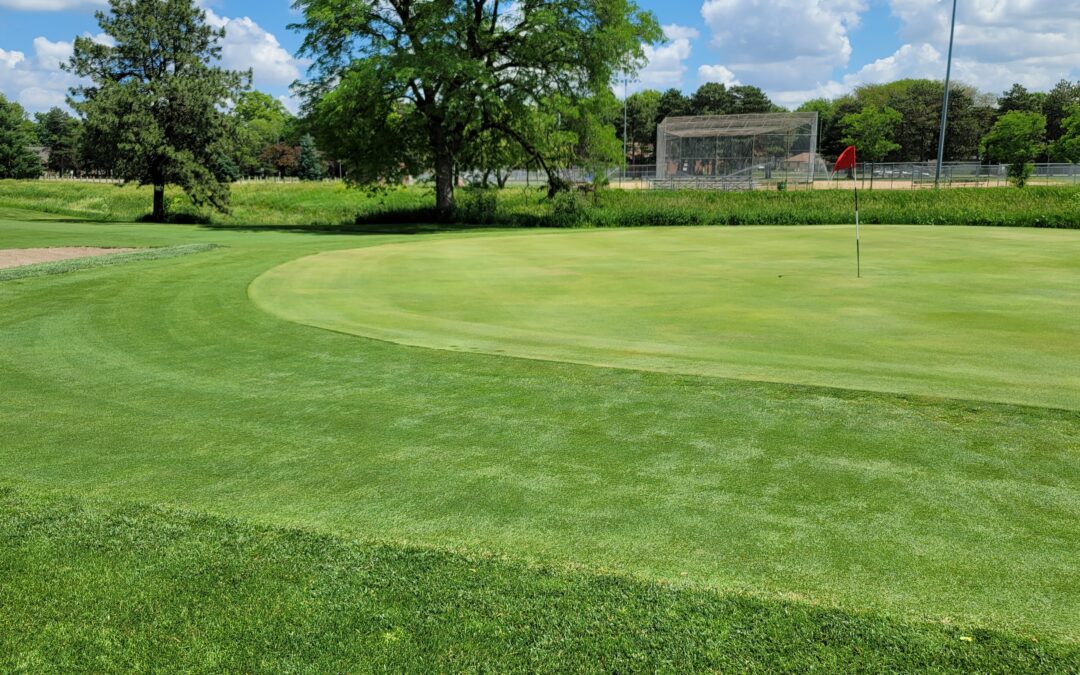Doug Soldat and I have been developing PGR growing degree day (GDD) models since 2008. These models have helped turfgrass managers understand how clipping yield – a.k.a. ClipVol – is affected by a single PGR application. They also provide golf course superintendents, field managers, and even lawn enthusiasts with re-application intervals to help sustain even growth suppression for the entire growing season.
Recently, we’ve seen more turf managers start to combine PGRs or re-apply before recommended re-application intervals to achieve greater levels of clipping yield suppression on both cool and warm-season putting greens. Our decade plus of research shows that single PGR applications can only suppress clipping yield on cool-season greens by so much; generally 15-45% depending on the active ingredient and application rate. High levels of suppression would require off-label application of a single A.I. How else could we dial up the suppression on cool-season greens?
Research Question: How do PGR mixtures impact playability?
Last year, I started a research study to understand how mixing PGRs influenced clipping yield and green speed under different combinations of nitrogen (N) fertilizer (0.15 or 0.30 lbs N 1000ft2 every two weeks) and mowing height (0.120 or 0.080 inches). Treatments were applied to a ‘V-8’ bentgrass putting green that was irrigated to prevent visible wilt from early June through August.
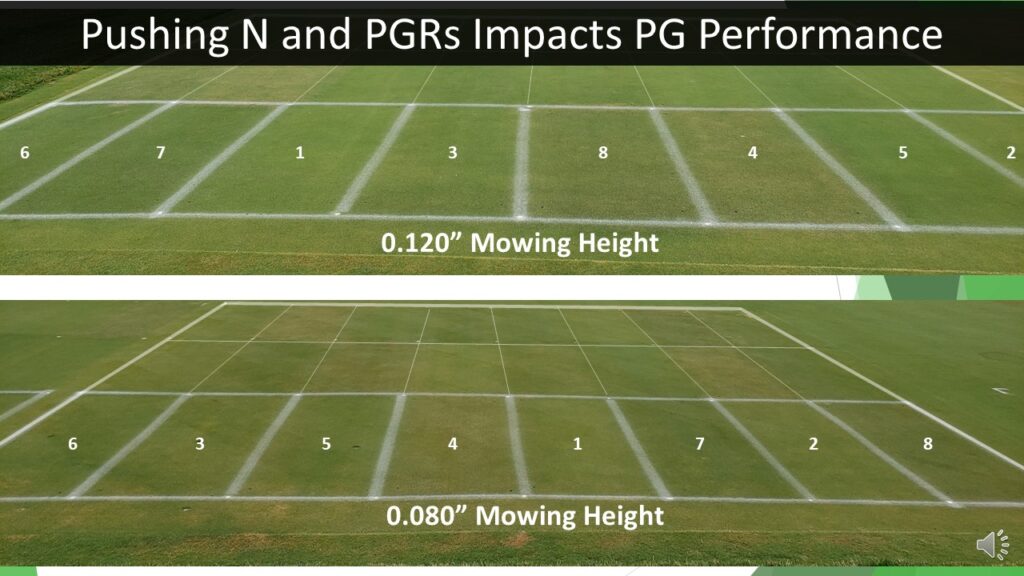
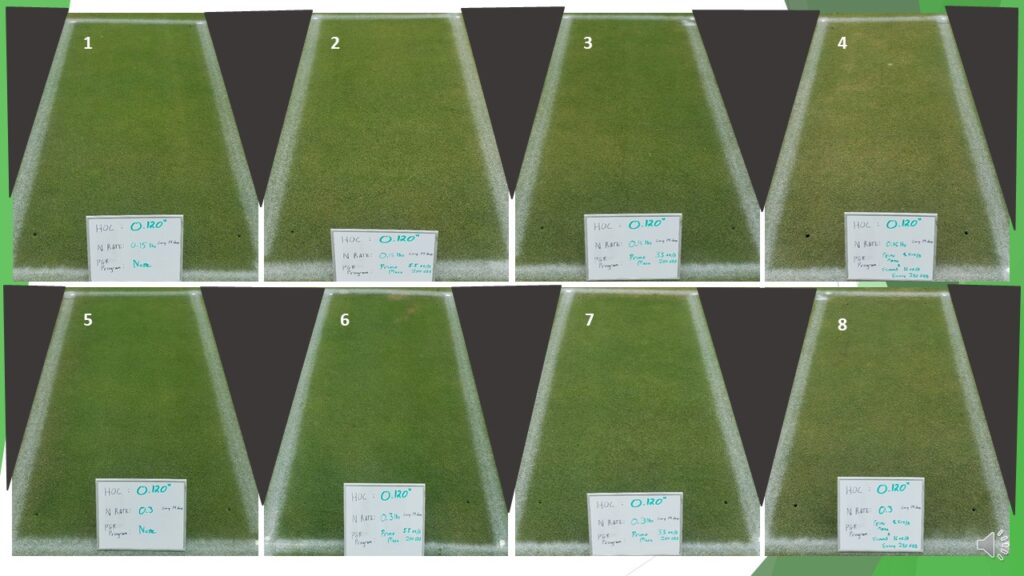
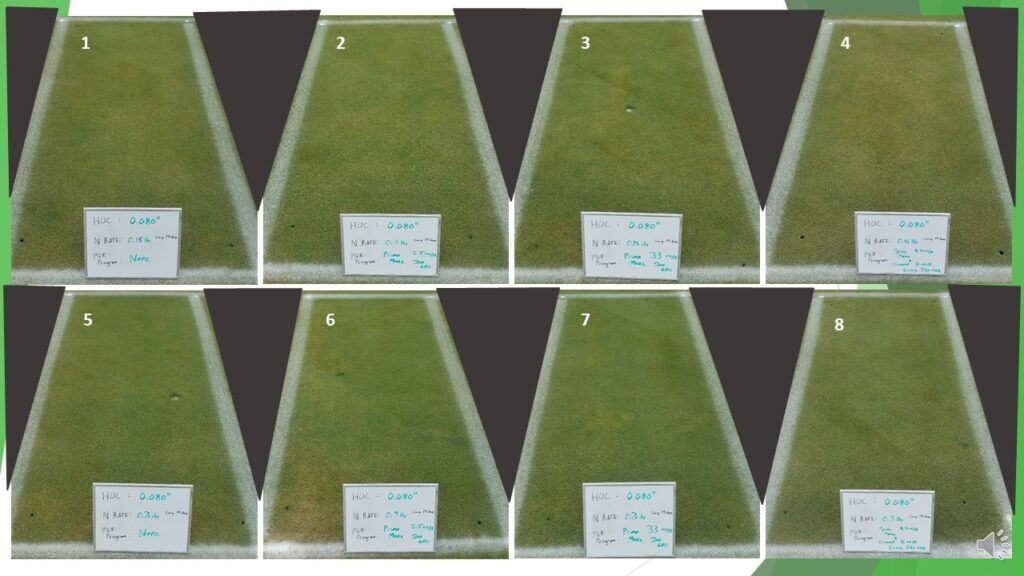
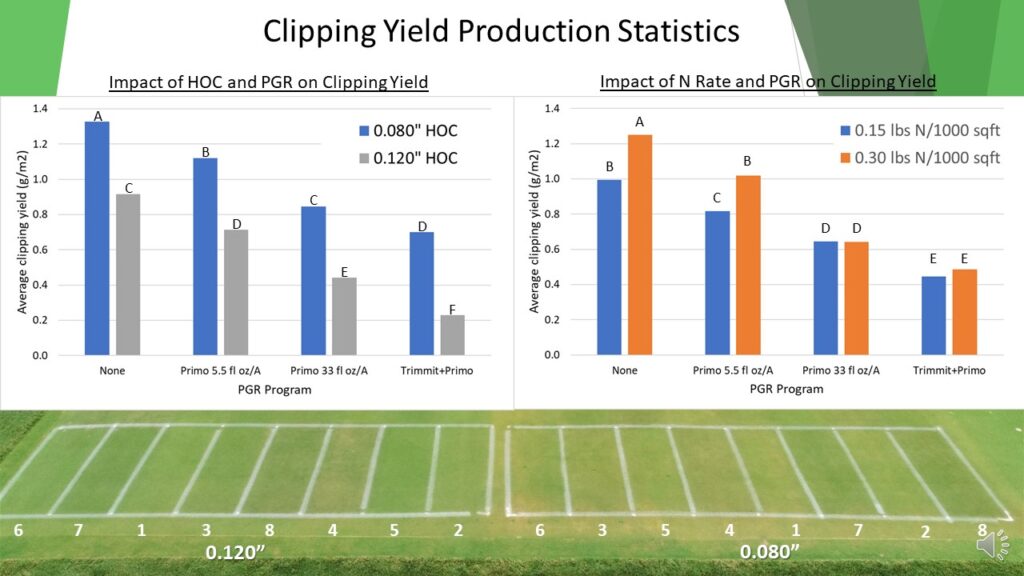
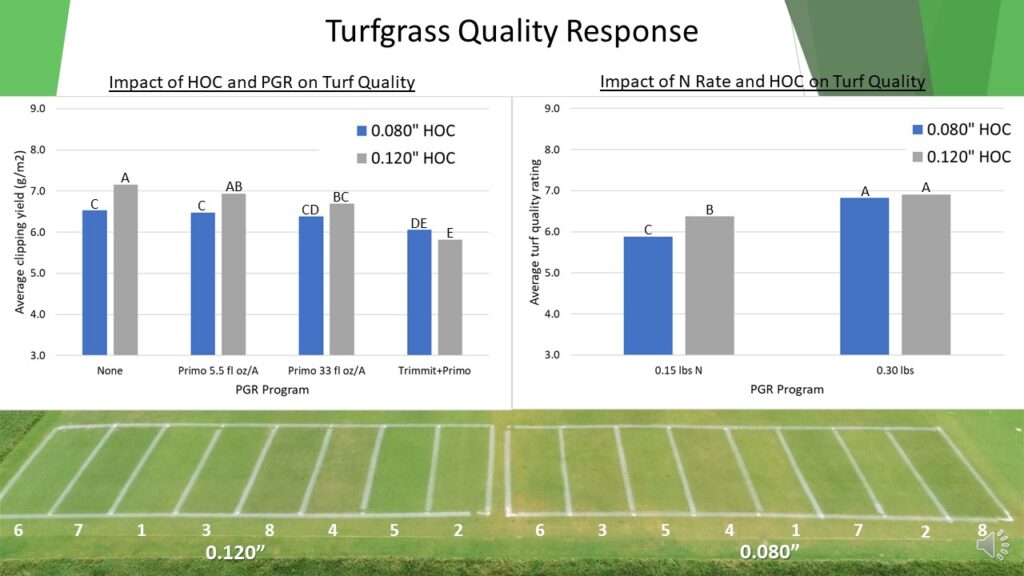
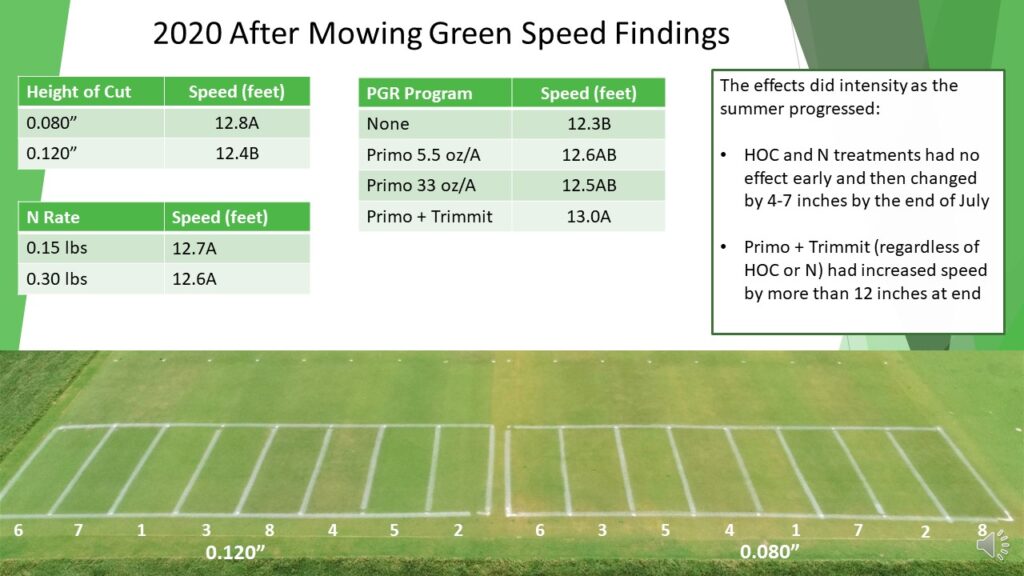
The PGR and N treatments had a profound impact on the growth, quality and playability of the putting surface. First, reducing the mowing height from 0.120″ to 0.080″ dramatically increased clipping yield. This result was greatest in the first two months of the study and were less obvious by the end of summer. On average, the turf at 0.080″ grew 40 to 200% faster than the bentgrass maintained at 0.120″ depending on the PGR program. This means that grass at 0.080″ needs 40 to 200% more nutrients and sugar to support the high growth rate. Clearly this shows why mowing very low can cause a stand to fail in mid-summer.
The PGR treatments included Primo Maxx (trinexapac-ethyl) at the 1x rate (5.5 fl oz per acre; 200 GDD), 6x rate (33 fl oz per acre; 200 GDD) or Primo Maxx + Trimmit 2SC (5.5 + 16 fl oz per acre; 280 GDD). The 1x rate provided the usual 20% clipping yield suppression while the 6x (and off-label rate for greens) provided 45-50% suppression. The legal combination of Primo Maxx and Trimmit 2SC suppressed growth by 55-70%.
Doubling N fertilizer increased clipping yield by ONLY 25% except for when Primo was applied at the 6x rate or in combination with Trimmit 2SC. For these PGR programs, there was NO increase in clipping volume from the added N fertilizer. The PGRs completely shut down the N response at both mowing heights. The added N did dramatically improve turfgrass quality, however. This led to extreme density and an ultra-fine texture compared to the low N treatment combinations.
What about green speed? The answer was pretty simple because there were no interactions between different variables. Put simply, the main variables (HOC, N and PGR) acted independently to alter green speed. Reducing HOC from 0.120 to 0.080 increased ball roll distance by an average of 4.8 inches and N fertilizer had no impact on green speed. The PGR programs did have a significant impact, however. The no PGR treatment had an average ball roll distance of 12.3 feet while the 1x and 6x rates of Primo at 200GDD had a ball roll distance of 12.6 and 12.5 feet, respectively. These increases were not statistically different from the no PGR treatment and wouldn’t have been perceivable to golfers even if the differences were real – especially on fast greens. Primo Maxx + Trimmit 2SC pushed the average green speed to 13.0 feet. An increase that is of both practical and statistical significance compared to the no PGR control treatment.
Do these results hold up In the “Real-World?”
It’s one thing to implement these aggressive PGR models on a research plot. They don’t have golfer traffic all day, there are no ball marks, limited slopes, and they are not adjacent to golf collars. So we took this research trial to a highly trafficked par-3 course in Lincoln, NE – Jim Ager Memorial Golf Course in 2020. The course has 50+ year old ‘Penncross’ greens that have received aggressive topdressing over the past five years (see this past blog about that transformation). The improved playing conditions and active youth golf program have increased the annual rounds to over 23,000 on only 1.2 acres of greens.
The PGR program in 2021 was a combination of Anuew (prohexadione-Ca) – another class A PGR like trinexapac-ethyl – and Trimmit 2SC. Rates were slowly increased from 6&6 fl oz per acre to 8&16 fl oz to limit the development of phytotoxicity that can accompany the first few apps with Trimmit 2SC. Nitrogen fertilizer was applied to hit clipping volume goals – more on that in my next blog post.
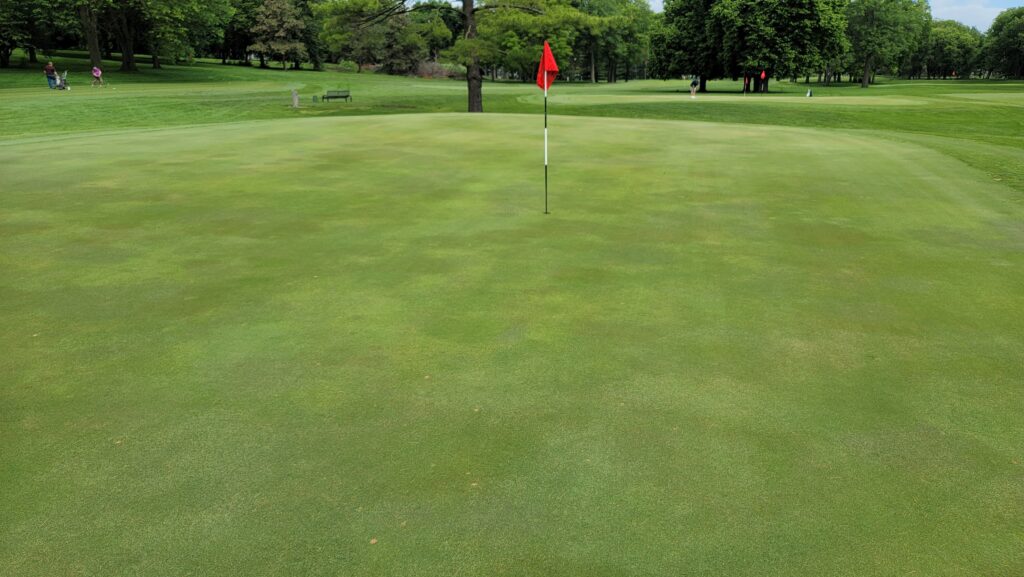
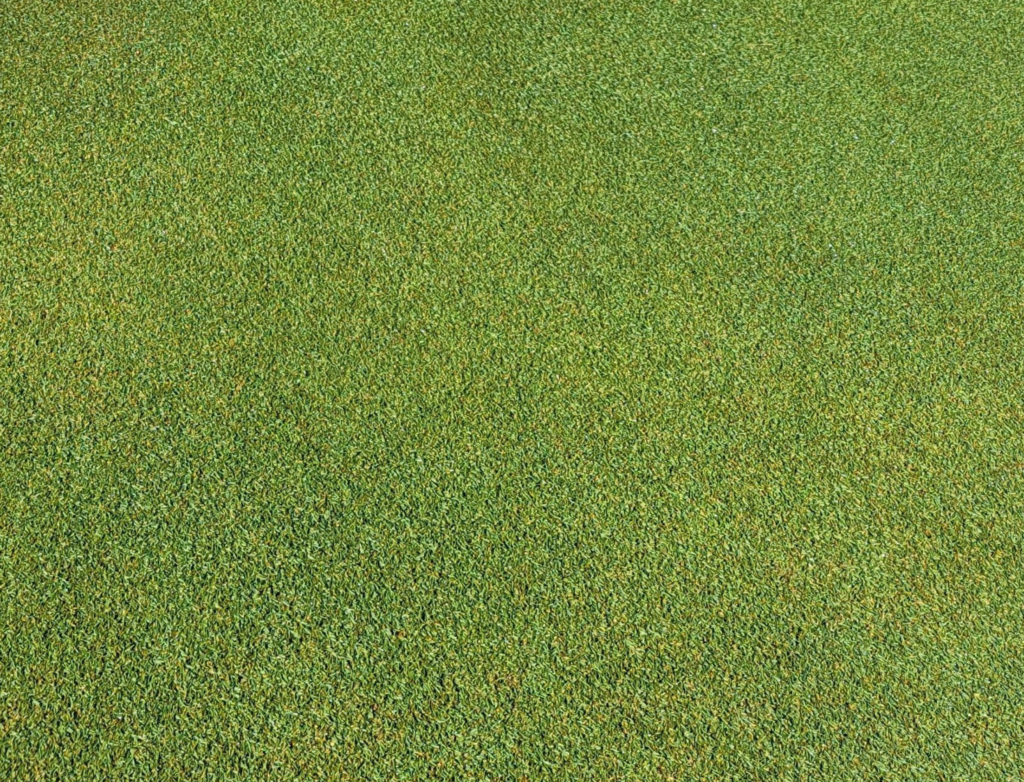
To date, the putting greens have performed wonderfully. The results are very consistent to the results from the 2020 research study. Even additional of N fertilizer has had a minimal impact on clipping yield, but the added N has helped promote recovery from traffic and increased stand density. The practice putting green is a prime example. This green receives significantly more traffic than the other greens. There a daily youth camps and golfers practicing on it from sunrise and sunset. That additional traffic was taking it’s toll on the turf health. Nitrogen fertilizer was increased by 200% on this green during June 2020. This promoted recovery by the PGR combination prevented a noticeable increase in clipping volume.
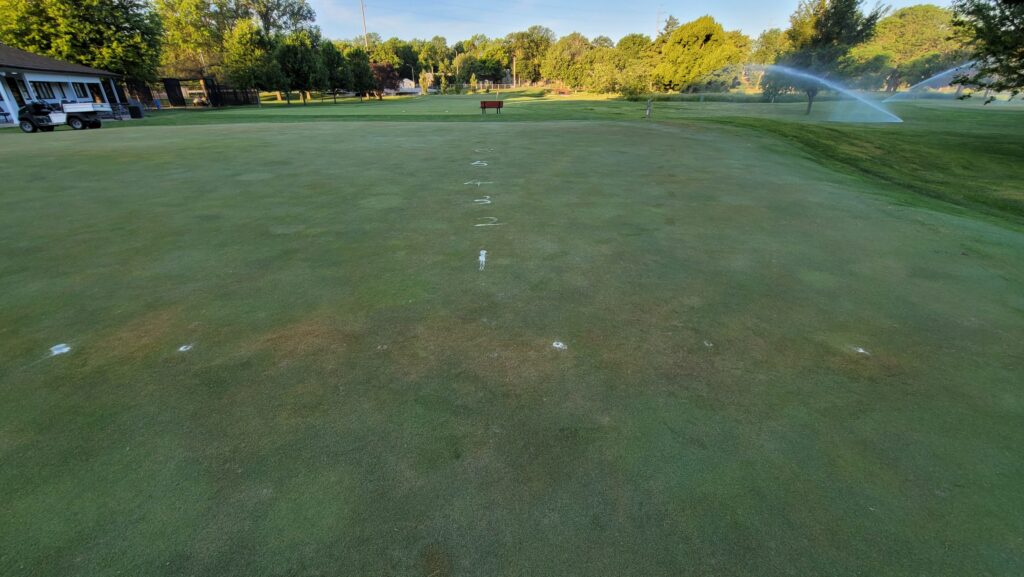
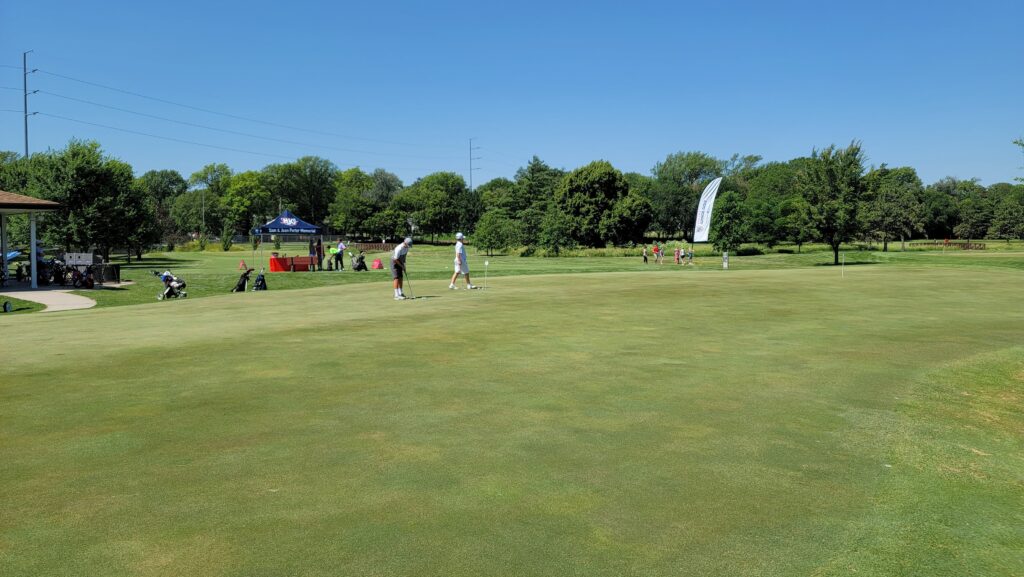
Collar health under this aggressive PGR and N management programs is definitely a major concern. Our research shows that PGR over-regulation is the leading cause of golf collar decline. The higher mowing height makes collars more sensitive to PGRs, and over-spray of greens apps were leading to excess levels of yield suppression. This reduced traffic tolerance during periods of low growth rate – i.e. late June in the Midwest. The use of a Frost, Inc. variable rate sprayer with individual nozzle control allows us to keep greens applications (PGRs, fertilizers, etc) on the greens on not the collars. Collars are instead treated with the rest of the fairways. That has significantly improved collar health during 2020 & 2021 despite much higher mowing frequencies in 2021.
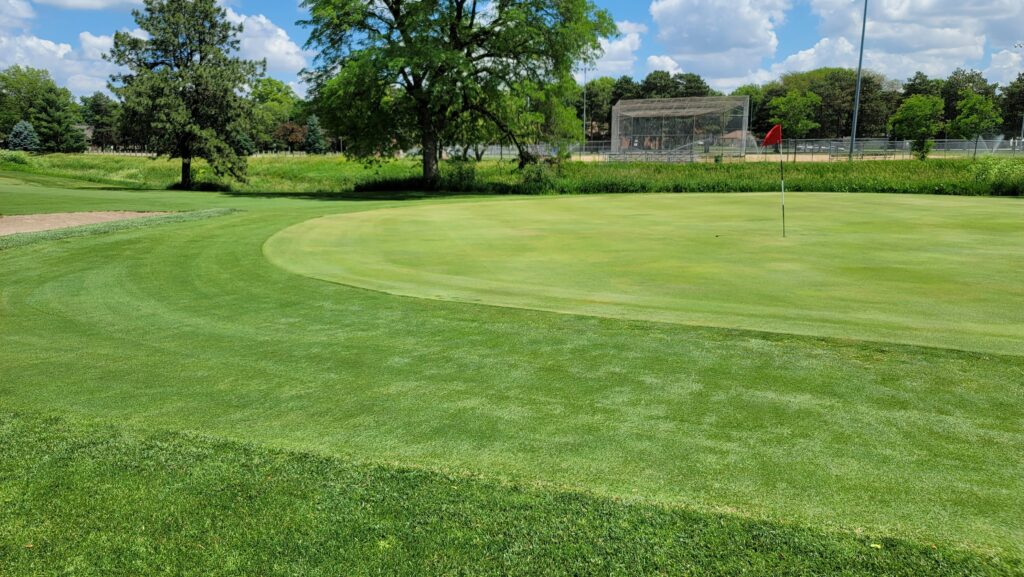
How do i get started?
GreenKeeper has over 700 different PGR & DMI GDD model combinations that function across many combinations of management areas (greens, tees, rough, etc.), grass species and active ingredients. These single product models were the first version of PGR GDD models and have provided guidance to help estimate the amount of suppression and when a PGR needs to be re-applied. Last year, we launched Version 2.0 of the PGR models. They now also include DMI fungicides because these material act similarly to Class B PGRs (paclobutrazol and flurprimidol). The major advancement to this model is it’s ability to estimate the amount of total suppression from multiple PGR and DMI applications to an area. The original model showed when to re-apply single products, this new model shows how all PGRs and DMIs having an impact on the growth rate of the turf with a proprietary algorithm. Now, turf managers can understand the complexity of multiple applications over a period of time. We’ll provide more information and guidance about the use of this feature in our next blog article.
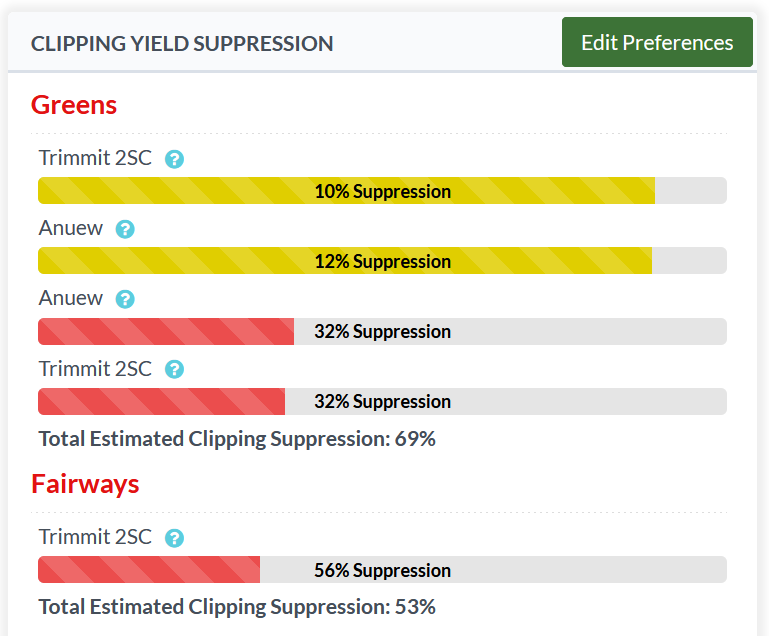
What others are saying
We’ve received numerous testimonials for golf course superintendents that have have successfully used this growth management approach to drive up stand density, improve plant health, and maximize green speed. This spring, many have voiced their positive experiences with using GDD models on Twitter. We encourage you to write about your experiences, hesitancy or questions in the comment section of this blog article or join the conversation on Twitter.

